When is the Best Time to Prune Trees
- February 7, 2024
- 0 comment
Pruning transcends mere trimming of branches, embodying a blend of artistry and scientific precision aimed at bolstering the wellbeing, safety, and visual charm of trees and shrubs. The judicious timing of pruning exercises a profound influence on a tree’s vitality and developmental vigor. Throughout this guide, we delve into the optimal periods for pruning, meticulously considering aspects such as the tree’s dormant phases, the specific varieties of trees in question, and the overarching goals of pruning endeavors.

Understanding Tree Dormancy
The concept of dormancy in trees, usually observed during the colder seasons, marks a significant slowdown in their growth and metabolic functions. This natural state of reduced activity is essential for tree care, particularly pruning. During dormancy, trees enter a state of rest, making them better equipped to handle the physical stress of pruning without compromising their health. Additionally, the dormancy period minimizes the likelihood of attracting pests or contracting diseases, which are more prevalent when trees are in full growth mode. As such, this phase provides an opportune window for pruning, allowing trees to recover and emerge stronger and healthier with the onset of the growing season.
Best Seasons for Pruning
Pruning during the right season is vital for the well-being of your trees. Let’s delve into the specifics:
| Type of Tree | Best Season for Pruning | Reasons/Notes |
|---|---|---|
| Deciduous Trees | Late Winter to Early Spring | Visibility is better without leaves; trees are dormant, reducing stress. |
| Fruit Trees | Late Winter to Early Spring | Pruning before the onset of new growth helps stimulate fruit production. |
| Flowering Trees | Just after Blooming | Pruning right after flowering preserves buds set for the next year, especially for spring bloomers. |
| Evergreen Trees | Late Winter to Early Spring | Minimal pruning needed; best done when dormant to shape and control growth without sacrificing foliage. |
| Summer-flowering Shrubs | Late Winter to Early Spring | Encourages strong blooms in summer; dormant season pruning promotes healthy new growth. |
| Spring-flowering Shrubs | Immediately after Flowering | Avoids cutting off next year’s blooms; helps shape the plant while preserving its flowering potential. |
| Oak Trees | Winter, November to March | Reduces the risk of Oak Wilt disease transmission; trees are dormant. |
| Conifers | Late Winter to Early Spring | Light pruning to maintain shape; avoid heavy pruning which can harm the tree. |
| Hedges | Late Winter and Mid-Summer | Initial heavy pruning in late winter, followed by light trimming in summer for shape and density. |
| Palm Trees | Late Spring to Early Summer | Removing only dead or dying fronds; avoid pruning during peak growth periods. |
This table provides a general guideline, but it’s important to consider the specific needs and conditions of each tree species, as well as regional climate variations, when planning pruning activities.
Reasons for Pruning
Pruning serves multiple purposes, from enhancing plant health to ensuring safety. Here’s why it’s an integral part of tree care:
Enhancing Plant Health
Pruning plays a crucial role in the health and longevity of plants. By carefully removing branches that are dead, dying, or damaged due to disease, pests, adverse weather conditions, or physical harm, we can prevent the spread of disease and reduce the likelihood of future damage. Removing branches that rub together is also essential, as this can cause wounds that make trees more susceptible to disease and pest infestations. Additionally, pruning away unnecessary branch stubs helps maintain the tree’s natural shape and promotes healthier growth.
Supporting Landscape Aesthetics and Functionality
Pruning significantly enhances a landscape’s beauty and function. It ensures plants fulfill their roles, like providing shade or privacy, and helps shape the overall design. Pruning promotes the blossoming of flowers and fruits, boosting visual appeal and supporting wildlife. It’s also crucial for keeping hedges dense and shaping plants according to garden aesthetics. By controlling plant size and removing excess growth, pruning maintains a landscape’s harmony and attractiveness.
Ensuring Safety and Property Integrity
Safety is a paramount concern in pruning practices. Removing dead branches and taking down hazardous trees are critical measures to protect your family and property from potential harm. Pruning branches that overhang homes, parking areas, sidewalks, and other public spaces minimizes the risk of injury or damage from falling limbs. Additionally, addressing branches that interfere with street lights, traffic signals, overhead wires, or obscure vision at intersections ensures a safer environment for the community. By focusing on these key areas, pruning not only enhances the health and beauty of the landscape but also contributes to a safer and more enjoyable outdoor space.
Specific Tree Considerations
Different tree species have unique pruning needs and timings. Understanding these nuances is key to effective pruning:
Deciduous Trees
Deciduous trees, known for shedding their leaves each year, are best pruned in late winter during their dormant phase, just before the resurgence of spring growth. This timing is crucial as it reduces stress on the trees, allowing for the clear identification and removal of branches without the interference of leaves. Examples of such trees include oaks, maples, and elms, which benefit significantly from late winter pruning.
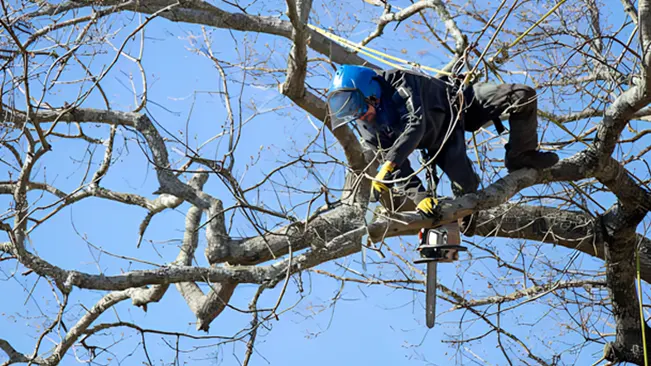
This practice sets the stage for vigorous new growth in spring, ensuring these trees are structurally sound and ready to thrive. Moreover, pruning in late winter helps to diminish the risk of attracting pests and diseases, which are more active in warmer months, thus maintaining the overall health and well-being of these deciduous species.
Evergreens
Evergreens, with their year-round foliage, generally necessitate less frequent pruning compared to their deciduous counterparts. When pruning is required, it should be tailored to the specific growth habits of the evergreen species in question and ideally carried out during their dormant season. This approach ensures that the natural shape and density of the evergreen are maintained while minimizing stress and potential damage to the plant.
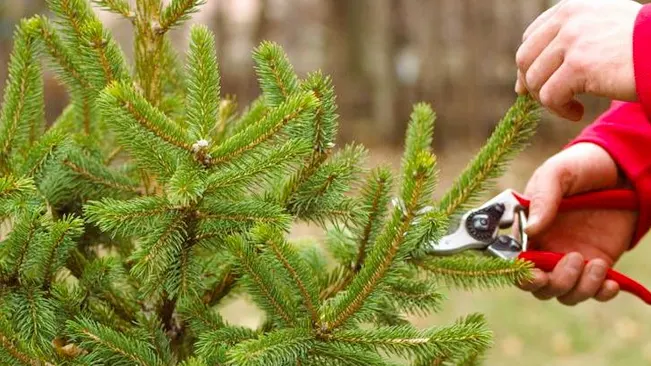
The dormant season, often in late winter or early spring before new growth begins, is the preferred time for this task, as it helps preserve the tree’s energy reserves and reduces the risk of disease or pest infestation that can occur with pruning during active growth periods.
Flowering Trees and Shrubs
Pruning early bloomers immediately after their flowering season helps preserve the next year’s buds, ensuring a continued floral display. On the other hand, summer-flowering plants should be pruned in late winter or early spring, before their growth cycle begins.
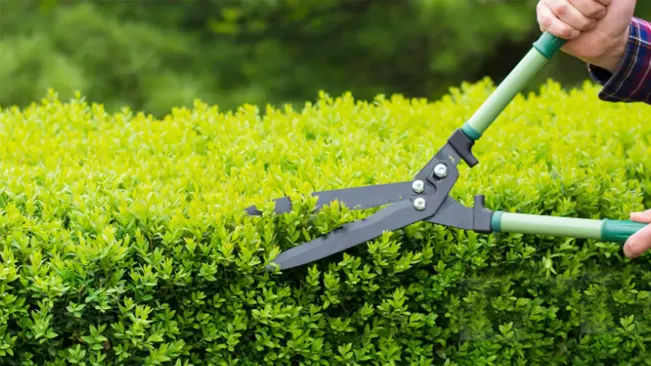
This timing allows them to focus energy on producing strong blooms and new growth, enhancing their summer vibrancy. Tailoring pruning to the plant’s blooming schedule is key to maintaining both the health and beauty of your garden.
Pruning Techniques and Tips
Effective pruning goes beyond just cutting back branches. Here are some techniques and tips for healthy pruning:
- Ensure you have sharp, clean pruning tools suited to the task. Hand pruners are great for small branches, loppers for medium branches, and a pruning saw for larger limbs. Clean tools between plants to prevent disease spread.
- Time your pruning according to the plant’s type and blooming cycle. Deciduous trees are generally best pruned in late winter, while flowering shrubs should be pruned according to their bloom time.
- Cuts should be clean and close to the branch collar (the swollen area where the branch meets the trunk or another branch), without leaving stubs. This promotes faster healing.
- Never remove more than 1/3 of a plant’s foliage at one time, and try to keep branches that are pruned to no more than 1/4 the diameter of the trunk to ensure the tree can adequately heal.
- Focus on removing dead, diseased, or damaged branches first. Then, thin out areas of dense growth to improve light penetration and air circulation. Remove any branches that cross or rub against each other.
- When you want to encourage bushier growth, use the heading back technique by cutting above a bud facing the direction you want new growth to follow.
- This involves removing entire branches or limbs to open up the plant, improve its shape, or reduce its size without stimulating excessive new growth.
- Always consider the overall health of the plant before making significant cuts. Weak or stressed plants may not recover well from heavy pruning.
- Remove water sprouts (shoots from the trunk or branches) and suckers (shoots from the roots or base of the plant) as they appear, as they can divert energy from the main structure of the plant.
- Avoid tearing the bark when removing large branches. Use a three-cut method for large limbs: first, make a notch on the underside of the branch a few inches from the trunk; second, cut through the branch from the top a few inches beyond the first cut; finally, cut the remaining stub near the branch collar.
Common Pruning Mistakes to Avoid
Pruning is an essential aspect of tree maintenance, promoting health, growth, and aesthetic appeal. However, even with the best intentions, certain mistakes can compromise the well-being of your trees and the safety of your surroundings. Here are some common pruning errors to avoid:
- Removing too much foliage at once can stress the tree. As a general rule, avoid cutting off more than 15-20% of a tree’s crown in a single pruning session.
- Cutting off the top of a tree, or “topping,” can lead to weak new growth and make the tree more susceptible to disease and decay.
- Pruning at the wrong time of year can interfere with flowering or make the tree vulnerable to weather damage or diseases. Understand the best pruning time for each species.
- Cutting too close to the trunk or parent branch, known as flush cutting, removes the branch collar, inhibiting the tree’s natural healing process.
- Leaving too long of a stub when cutting branches can prevent healing and invite pests and disease.
- Dull pruning tools can cause jagged cuts that are more susceptible to infection and disease.
- Failing to clean tools between trees can spread diseases from infected trees to healthy ones.
- Pruning without a good reason, such as removing healthy limbs, can weaken the tree.
- Not wearing protective gear or taking proper safety precautions can lead to accidents.
- While not all trees require wound sealant, some species are prone to certain diseases and may benefit from sealing large wounds.
When to Call Professional
Calling in a professional for tree pruning becomes essential under certain conditions, such as when dealing with large or tall trees that require specialized equipment, trees situated dangerously close to power lines, or those exhibiting signs of disease or extensive damage. Additionally, intricate pruning tasks, safety concerns involving potential property damage, lack of personal pruning experience, or dealing with trees that demand specific care, like fruit or ornamental varieties, warrant the expertise of a trained arborist. Professionals not only bring the necessary skills and equipment to handle these complex scenarios safely and efficiently but also ensure the health and structural integrity of the trees are maintained, aligning with both safety standards and aesthetic values.
Related Topic
- When is the Best Time to Trim a Tree
Conclusion
Pruning stands as a cornerstone in the realm of tree care, offering profound benefits when executed with precision. By adhering to optimal timing and employing correct techniques, pruning not only bolsters the health and structural integrity of trees but also significantly contributes to their aesthetic appeal and safety. This careful maintenance practice ensures that trees not only survive but flourish, becoming enduring, vibrant fixtures in their environments.
FAQs
- What is the best time of year to prune most trees?
The best time to prune most trees is during the dormant season, typically from late fall to early spring (November through March). This timing helps minimize stress on the trees and reduces the risk of pest infestation and disease. - Why is winter considered the ideal time for pruning?
Winter is ideal because trees are dormant, reducing the chance of stress. The lack of leaves also provides a clearer view of the tree’s structure, making it easier to identify which branches need pruning. - Can I prune my trees in the summer?
Yes, but summer pruning should be limited to light trimming or removing dead, diseased, or damaged branches. Avoid heavy pruning during the summer as it can lead to excessive sap loss and stress the tree. - How does pruning benefit the health of a tree?
Pruning removes dead or diseased branches, which can prevent the spread of disease. It also improves air circulation and sunlight penetration within the canopy, which can enhance the overall health of the tree. - Is there a specific time to prune flowering trees?
Yes, the timing for pruning flowering trees depends on when they bloom. For trees that bloom in spring, prune immediately after they finish blooming to avoid cutting off next year’s buds. For trees that bloom in summer or fall, prune during the dormant season. - How can I tell if my tree needs pruning?
Look for dead, diseased, or damaged branches, branches that rub together, and any limbs that pose a safety hazard. Also, consider pruning if the tree’s growth is too dense or if it’s growing in an undesirable shape. - Should I prune my oak trees, and if so, when?
Yes, oak trees should be pruned to maintain their health and structure, but it’s crucial to prune them during the dormant season, ideally between November and March, to prevent the spread of Oak Wilt disease. - Can improper pruning harm my trees?
Yes, improper pruning techniques, such as topping (cutting off the top of the tree) or leaving large stubs, can lead to significant stress and disease in trees. Always use proper pruning methods or hire a professional. - How often should trees be pruned?
The frequency of pruning depends on the species, age, and health of the tree, as well as the desired outcome. Most mature trees can be pruned every 3 to 5 years, while younger trees may need more frequent pruning to shape their growth. - Should I hire a professional arborist for pruning?
If you’re unsure about how to prune correctly, or if the trees are large, in a hazardous location, or require specialized care, it’s best to hire a professional arborist. They have the knowledge, tools, and experience to prune trees safely and effectively.

Charles Hayes
Forestry AuthorI'm Charles Hayes, I bring over 15 years of specialized expertise in landscaping and woodworking, blending artistic design with sustainable environmental stewardship. My career, fueled by a profound passion for the natural world, encompasses extensive education and hands-on experience in creating harmonious, eco-friendly outdoor spaces and responsibly managing forest resources. Recognized for my professional standing, I am committed to continuous learning and certification in cutting-edge practices. My expertise is not only reflected in my work but also in my contributions to community projects, educational workshops, and collaborations with industry leaders. As an authoritative voice in my field, I strive to share knowledge and promote environmentally conscious approaches, making me a trusted resource in landscaping and forestry.


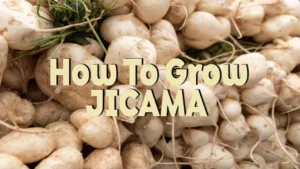







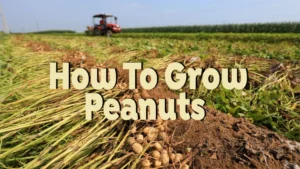

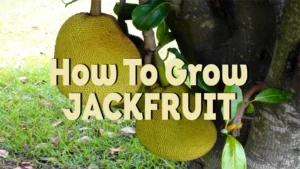
Leave your comment